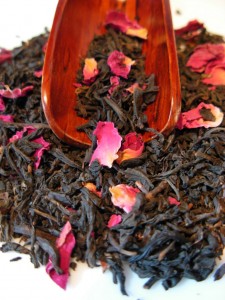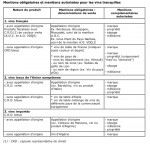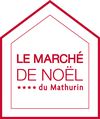Tout le monde connaît le thé et rare sont ceux qui le boudent. Alors, je vous propose de vous citer, à la manière d’une ordonnance de bonheur, quelques uns des plus sublimes d’entre eux ….
 Mais, tout d’abord, d’où vient le mot thé ? Et bien, Il se disait t’e en dialecte chinois. Cela date de l’époque où les navires hollandais croisaient les jonques chinoises dans la province du Fuxian. Puis, le mot devint thee en hollandais; l’infusion s’appela tee en allemand, te en italien, en espagnol, en danois, en norvégien, en suédois, en hongrois et en malais, tea en anglais, thé en français, teja en letton, tee en finlandais, tey en tamoul, ta en coréen, thay en cingalais, et… thea pour les scientifiques…
Mais, tout d’abord, d’où vient le mot thé ? Et bien, Il se disait t’e en dialecte chinois. Cela date de l’époque où les navires hollandais croisaient les jonques chinoises dans la province du Fuxian. Puis, le mot devint thee en hollandais; l’infusion s’appela tee en allemand, te en italien, en espagnol, en danois, en norvégien, en suédois, en hongrois et en malais, tea en anglais, thé en français, teja en letton, tee en finlandais, tey en tamoul, ta en coréen, thay en cingalais, et… thea pour les scientifiques…
Bon, trêve d’encyclopédisme, voici donc un florilège très personnel de thés que j’aime particulièrement et que l’on trouve dans les salons ou dans toutes les bonnes boutiques (comme notre fournisseur Le Palais des Thés).
– Darjeeling Namring : thé pâle d’un jaune léger tirant au vert, arôme délicat et frais.
– Dianhong Aiguilles d’Or : sans conteste l’un des meilleurs thés de la région du Yunnan en Chine.
– Sikkim : thé rare récolté à l’est de l’Himalaya.
– Panyong Golden Needle : somptueux thé noir de la montagne Tai Mu.
– Assam Récolte d’Eté Feuilles brisées : thé charnu, moelleux, riche en notes épicées.
– Jardin Persan : thé délicat récolté dans les jardins… persans.
– Kenya : un magnifique breuvage d’Afrique.
– Nuwara Eliya Orange Pekoe : subtil thé noir issu des jardins de Nuwara.
– Thé de la Fête du Dragon : thé mêlant citronnelle, fruits et épices.
– Lumières du Sud : thé agrémenté de fleurs.
– Qihong (ou Keemun) : thé cultivé dans le Qimen, dans la province de l’Anhui.
– Uva Orange Pekoe : thé en feuilles entières issu des jardins Dyraaba.
– Earl Grey Fleurs Bleues Supérieur : beauté et délicatesse pour ce breuvage aux fleurs de bleuet.
– Serment de Leïla: merveilleux thé noir aux saveurs orientales.
– Thé Amaretto : célèbre thé italien aux amandes.
– Dimbula Orange Pekoe : thé originaire de Ceylan, cultivé dans les jardins de Pettiagalla.
– Nilgiri : thé indien.
– Géorgie : thé de l’Azerbaïdjan cultivé dans les plantations les plus septentrionales du monde.
– Tanzanie CTC : thé au corps équilibré et huileux.
– Viêt Nam OP : thé vert au jasmin ou thé noir
A l’hôtel où nous proposons une très belle carte de thés, vous pourrez déguster le thé du hamman venant du Palais des thés ou les thés de noel et du sahara de chez Mariages Frères.
Et vous quelle est votre tasse de thé ?
Pour terminer, en guise de clin d’œil, je vous rappellerai que le thé, avant de s’afficher comme breuvage quotidien ou liqueur raffinée à l’extrême, fut pendant des millénaires… feuille à mâcher, herbe médicinale ou simple légume !
Cup of tea?
Everyone knows about tea and very few people dislike it. So, I propose to cite, a bit like a prescription for happiness, some of the most sublime teas in the world.
But first of all, where does the word tea come from? Well, it was called t’e in Chinese dialect. That dates back to the time when Dutch ships encountered Chinese junks in the province of Fuxian. Then, the word became thee in Dutch; the infusion was called tee in German, te in Italian, Spanish, Danish, Norwegian, Swedish, Hungarian and Malay, tea in English, thé in French, teja in Latvian, tee in Finnish, tey in Tamil, ta in Korean, thay in Singhalese, and… thea for scientists…
Anyway, that’s enough encyclopaedic information and here is a very personal list of teas that I particularly like and that can be found in tea salons and all good tea shops (such as our supplier Le Palais des Thés).
– Darjeeling Namring: a pale light yellow to green tea with a delicate and fresh aroma.
– Dianhong Aiguilles d’Or: incontestably one of the best teas from the region of Yunnan in China.
– Sikkim: a rare tea harvested to the east of the Himalayas.
– Panyong Golden Needle: a delicious black tea from Tai Mu Mountain.
– Assam Récolte d’Eté Feuilles brisées: a full-bodied, rich tea with abundant spicy notes.
– Jardin Persan: a delicate tea harvested in Persian gardens.
– Kenya: a magnificent tea from Africa.
– Nuwara Eliya Orange Pekoe: a subtle black tea from the gardens of Nuwara.
– Thé de la Fête du Dragon: a tea with lemongrass, fruits and spices.
– Lumières du Sud: a tea with flowers.
– Qihong (or Keemun): a tea grown in Qimen, in the province of Anhui.
– Uva Orange Pekoe: a tea made of whole leaves from the Dyraaba gardens.
– Earl Grey Fleurs Bleues Supérieur: beauty and delicatessen for this tea with cornflowers.
– Serment de Leïla: a marvellous black tea with oriental flavours.
– Thé Amaretto: a famous Italian tea with almonds.
– Dimbula Orange Pekoe: a Ceylon tea, grown in the gardens of Pettiagalla.
– Nilgiri: an Indian tea.
– Géorgie: a tea from Azerbaijan grown in the most northern plantations in the world.
– Tanzanie CTC: a tea with a balanced and oily body.
– Viêt Nam OP: a green jasmine tea or a black tea.
At the hotel where we propose a great choice of teas, you can taste the hamman tea from the Palais des thés or the Christmas or Sahara teas from Mariages Frères.
And you, what is your cup of tea?
To finish, I would like to remind you that tea, before becoming an everyday drink or an extremely refined liquor, was for thousands of years… a leaf that was chewed upon, a medicinal herb or just a vegetable!
Didier MOINEL DELALANDE






